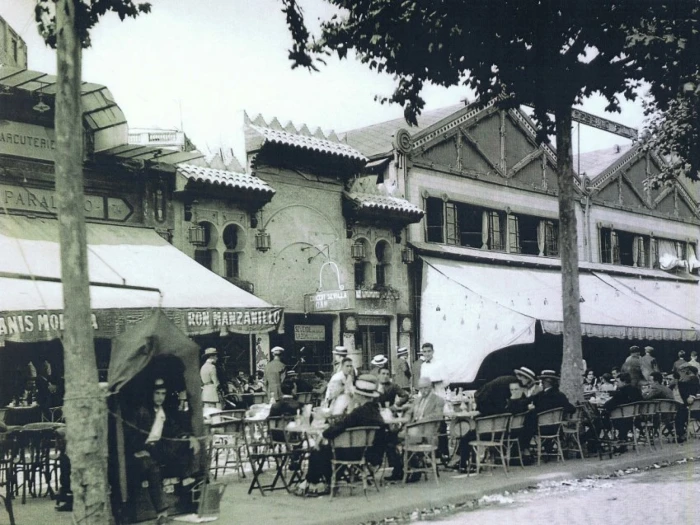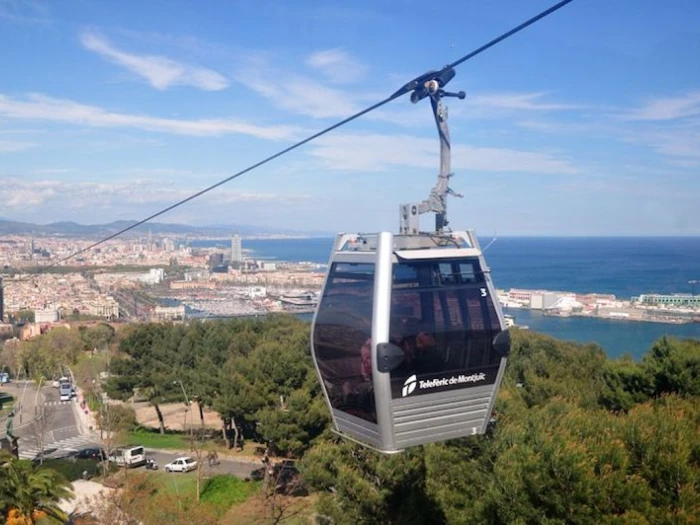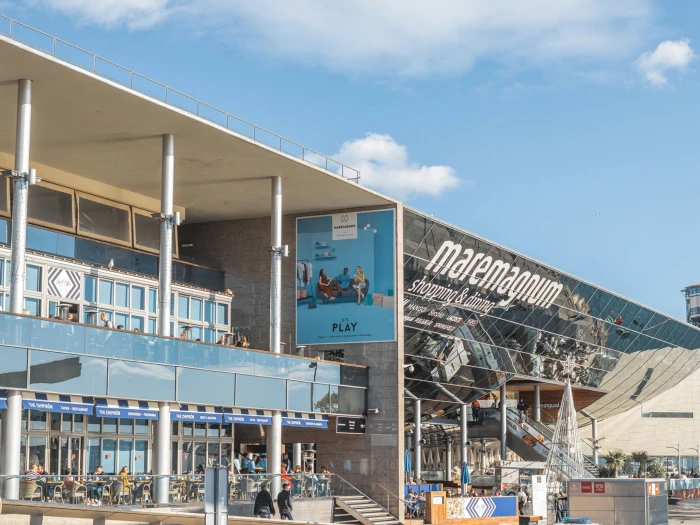Neighborhood & Surroundings
The Ramblas of Barcelona
In the early 18th century, the Rambla was no more than a path bordered by convents and city walls. But towards the century’s end, the street began to be developed, and the Rambla slowly evolved into the road we know it as today. The Rambla is actually divided into six different parts with their own names, starting in Plaza Catalunya and leading towards the sea:
- Rambla de Canaletes takes its name from a public fountain, which traditon says anyone who drinks from its waters will always return to the city.
- Rambla dels Estudis, the site of a 15th century building, known as General Studies or University, and converted into barracks by king Felipe V after the city's defeat in 1714.
- Rambla de les Flors, the only place in the city where flowers were sold in the 19th century, and which even today stands out as a special spot.
- Rambla dels Caputxins, which takes its name from the Order of Friars Minor Capuchin, which was based in this part of the city.
- Rambla de Santa Mònica, which sits beside the port, and where the eponymous parish was built.
Rambla de Mar is the most recent addition. It is a spectacular laminated wood passage which, since 1994, brings us across the waters from the Columbus statue to the Maremagnum.

History of El Paral·lel
Avinguda del Paral·lel is one of Barcelona’s most popular and best-known streets. Designed by Ildefons Cerdà, as part of his plan for the city’s expansion, Paral·lel links the port with the iconic Plaza Espanya. Paral·lel was officially opened in 1894, shortly after the demolition of the city’s medieval walls. Interestingly, a piece of the wall, and the gate at Portal de la Santa Madrona, built in the 15th century, can still be observed at the foot of the avenue.
While the city’s residents have always referred to the street as “el Paral·lel” because of its geographic trajectory coincident with the Circles of Latitude, the avenue has had various official names throughout history. Initially, it was called Avenida del Marqués del Duero, in homage to the military hero and political figure Manuel Gutiérrez, for his crucial role in the House of Bourbon Restoration. During the Second Spanish Republic, in 1932, it was renamed Avinguda de Francesc Layret, for the Catalanist politician assassinated in 1920. Upon the conclusion of the Spanish Civil War, in 1939, the avenue recovered its original name once again. Then, in 1979, the City Hall approved the name Avinguda del Paral·lel, which it continues to go by today.
One of the Paral·lel’s defining characteristics is its plethora of theatres and entertainment venues. In the early 20th century, el Paral·lel was to Barcelona what Montmartre is to Paris; or the West End to London; or Broadway to New York. El Molino, an emulation of Paris’s Moulin Rouge, opened in 1910. The parisian cabaret was owned, oddly enough, by Josep Oller, a Catalan then living in the French capital. The avenue’s other major landmarks include the three imposing chimneys still standing from a long-defunct power plant, which has now been converted into a playground and office building.

Cable Car
When you stay at Hotel Barcelona Universal, you have a truly unforgettable way of going up the mountain of Montjuïc.
The Montjuïc Cable Car – the city’s only public cable car – sits just opposite the hotel. Built by the engineer Emilio Echevarría, in preparation for the 1929 International Exposition, the route has a 76 meter incline.
Inaugurated in 1970, technically it’s not a cable car but a cable compartment that connects the city to the top of the mountain of Montjuïc (84.5m elevation). On the ride up, you can see the entirety of the valley of Barcelona, from the Collserola mountains to the Mediterranean Sea.
The first stop is the Mirador or Miramar, surrounded by one of the city’s most impressive green spaces. The second stop is the Castle of Montjuïc. This 17th century military fortress was originally the site of a watchtower and maritime signaling post. Since 2009, it’s been under construction, as it is being remodeled into a city facility and a Center for Peace.
The Castle delivers truly unrivaled panoramic views over the city: you can spot the Plaza Cataluña, the Cathedral, the Sagrada Família, the cruise ships docked at the port, the Olympic Village, the Agbar Torre, the Forum… let the city’s sights seduce you!

Quay & Maremàgnum
The Port Vell (Old Port) has reinvented itself completely, transforming into a cultural place of reference and emblematic site for tourists and locals alike, and playing a fundamental role in the city’s cultural life, as any of its 16 million annual visitors could easily tell you.
The Port also happens to be one of the oldest parts of the city. The Roman troops who founded the colony of Barcino arrived by sea, meaning that Barcelona has been a docking site for large ships for over 2,000 years.

Cruises
The port of Barcelona has become one of Europe’s leading ports for cruise ships, and serves as the home base for the principal cruise companies navigating the Mediterranean. A member of MedCruise (The Association of Mediterranean Cruise Ports), it boasts 7 international terminals and welcomes over 2.6 million passengers annually.

Beaches of Barcelona
The history of the city has always been closely tied to the sea, and its beaches have now become the chosen rest and relaxation spots for residents and tourists alike. Among the most popular are the Sant Sebastià, Mar Bella, Barceloneta…


